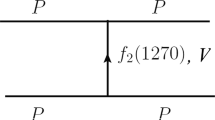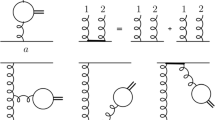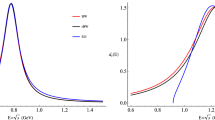Abstract.
The treatment of elastic final-state interactions (FSIs) under a symmetry group is presented. The proposed model is based on Watson's theorem, i.e. on symmetry properties of the \(\mathbf S\)-matrix and on its unitarity. This theorem provides an easy way to introduce rescattering effects by defining final-state interactions mixing matrices. A symmetry group fixes the structure of such mixing matrices, and the passage from one group to another is studied (for example, SU(2) to SU(3)). Mixings among two charmless pseudoscalar decay product states will be systematically analyzed. Finally, these mixing matrices will be used on quark diagram parametrizations of B and D decay amplitudes. This will have some important consequences on the definition of quark diagrams. It will be argued that these diagrams should not contain any FSI effects, i.e. they should be real (except for CKM factors). FSIs are then introduced at the hadronic level, by mixing basic quark diagram topologies.
Similar content being viewed by others
Author information
Authors and Affiliations
Additional information
Received: 17 December 1998 / Revised version: 17 February 1999 / Published online: 28 September 1999
Rights and permissions
About this article
Cite this article
Smith, C. SU(N) elastic rescattering in B and D decays. Eur. Phys. J. C 10, 639–661 (1999). https://doi.org/10.1007/s100529900054
Issue Date:
DOI: https://doi.org/10.1007/s100529900054




